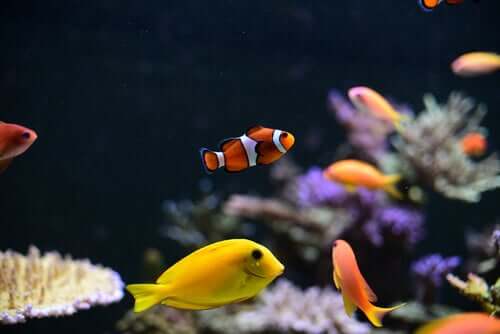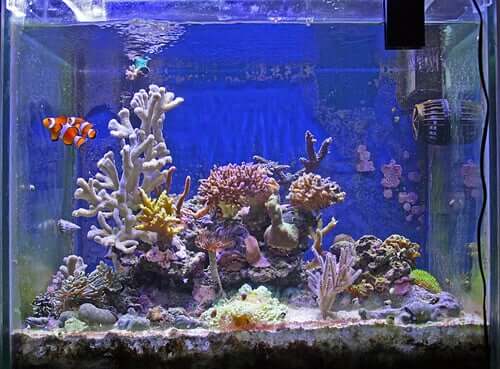Fish Tank Setup - How to Do It Properly

A fish tank setup seems simple enough but there are many things people aren’t aware of. For example, how much do you know about the habitat of aquatic pets? Are you aware of the measurements an aquarium requires to meet their needs?
A single wrong element could make life difficult for any fish, however improbable it may seem. This is because toxic elements, pollution, and lack of space are just some of the things you should consider and avoid.
Today we’ll show you the most common mistakes people make when setting up a fish tank, this way you’ll be able to avoid them.
Fish tank setup – say no to artificial ornaments
Many of the mistakes people make when setting up a new fish tank have to do with their desire to make it look pretty. And one of the most common problems is the exaggerated implementation of artificial ornaments.
Each piece you place inside the tank contains some residual materials that could easily contaminate the water and affect the health of your fish. Also, many of the decorative objects aren’t really a part of their natural environment.

So, keep in mind that an aquarium is not a work of art, but a pleasant ecosystem for your pets.
Using large and colored rocks is not a good idea
Colored stones are definitely striking and also toxic to aquatic animals. This is because the dyes contain all sorts of chemicals that are harmful to fish.
For this reason, the best choice is to opt for real rocks that can sort of recreate their natural ecosystem. Also, try not to use rocks that are too large in relation to the internal space of the tank.
The idea behind it is for solid objects not to interfere with the normal fluidity of water; they shouldn’t limit their swimming area.
Behold the power of a filter
Some people wrongly believe they can do without a filter as long as they regularly clean the tank. But the truth is, filters don’t only clean the water, they also purify it and that’s ideal for a fish.
Installing a filter in the fish tank will ensure the water is 100% free of ammonia. This tool is quite influential on the well-being of your aquatic pets as you’ll prevent many diseases.
The reason for it is that filters accumulate key microorganisms that facilitate both tasks. Of course, it’s always a good idea to clean your aquarium, just be aware of its limits.
Fish tank setup – there’s such as thing as too clean
So, any fish, small or large, needs a clean environment to survive. However, these shouldn’t be entirely disinfected. As we said above, cleaning is important but you shouldn’t overdo it so as to not be too invasive. If you must choose, opt for a good filter instead of cleaning too often.
To be exact, you must clean a fish tank every 3 to 4 weeks. This is because there are some microorganisms in the water that are good for the fish. So, you should retain some to strengthen the fish’s immune system.
Another very common mistake is to wash the rocks and ornaments with soap. Keep in mind this substance only makes the water more toxic and also eliminates the good bacteria that strengthen the immune system of these animals.
Stay away from ball-shaped fish tanks
The image of the round fishbowl is the most common representation of an aquarium in pop culture. But, these don’t provide enough space for an aquatic animal.

In fact, fish who live in these types of bowls get highly stressed. The shape doesn’t promote proper water oxygenation and their swimming space is quite reduced.
On the contrary, rectangular and elongated fish tanks help create a more adequate and varied ecosystem. You can place many specimens in these but make sure you’re familiar with their cohabitation “rules.”
Fish tank setup – don’t replace the water entirely
Finally, maintaining a fish tank is a rather delicate endeavor even when it comes to changing the water. By the way, it’s a huge mistake to replace it completely. The proper way to do it is to keep part of the existing water and then refill the tank with running water.
In fact, there are two goals in this procedure:
- The first one is to acclimatize the fish. This is a priority for them so that they don’t get too stressed. It also helps them adjust to their artificial environment.
- The second goal is to preserve some of the good bacteria we mentioned above.
Thanks for reading, we hope you’ve enjoyed this article.
This text is provided for informational purposes only and does not replace consultation with a professional. If in doubt, consult your specialist.